Why does a rose have pale leaves and how to fix it?
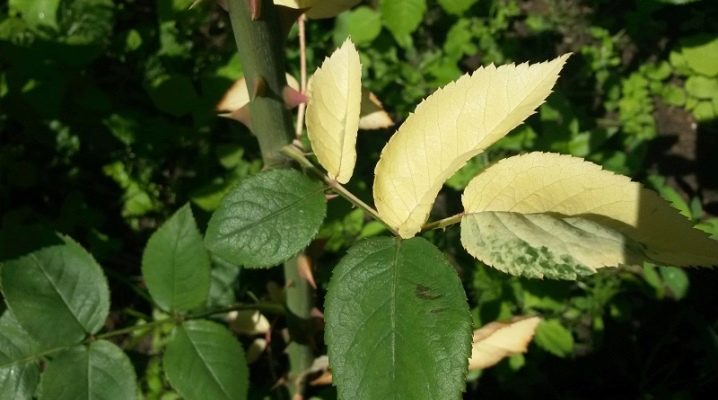
Many gardeners grow roses on their plots. This vegetation can beautify almost any landscape. But sometimes the leaves of garden roses begin to fade. Today we'll talk about why this happens and what to do about it.
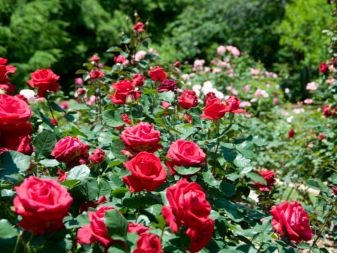
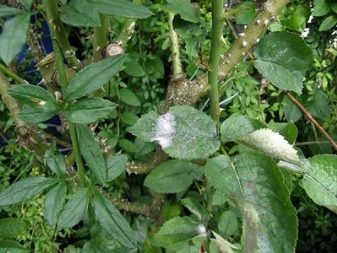
Diseases and the fight against them
Often, rose leaves become pale due to various diseases.
- Powdery mildew. Most often, this disease appears due to the too frequent use of fertilizers that contain nitrogen. Powdery mildew can also occur due to excessive watering, too hot and humid weather in summer. It often appears on those plants that are planted in poorly lit areas. When infected, the leaf blades begin to fade, a whitish bloom forms on their surface, it spreads very quickly throughout the plant. Over time, the foliage begins to curl and fall off. Gradually, the powdery light bloom will begin to acquire a brownish-red color.
- Chlorosis... This disease develops due to a lack of iron. It affects exceptionally young foliage. The foliage becomes pale, then becomes white and falls off.
- Gray rot. This fungal disease is very similar to powdery mildew. Over time, a thin coating of a gray tint forms on the leaves, the foliage rots and falls off. Most often, gray rot develops due to excessive dampness. If the plants are planted too close to each other, then the infection will spread as quickly as possible.
Only timely treatment will restore the garden rose. If the infection is strong, then it is better to immediately use ready-made chemicals. The best option would be fungicides ("Fundazol", "Falcon"). The medicinal solution is prepared in strict accordance with the instructions. The finished composition is sprayed three times with an interval of ten days. A couple of weeks after the last treatment of roses, special biological fungicides ("Fitosporin-M"). Remember that such formulations can have a good effect only when used in warm weather (temperature not lower than +15 degrees). It is also permissible to use preparations containing copper. These include HOM, Abiga-Peak, and Bordeaux liquid.
Remember that a one-time treatment will not kill the harmful fungus, so after a short amount of time, the plant will start to hurt again.

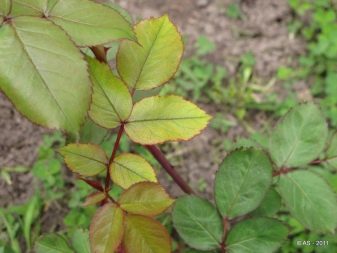
If the disease has just begun to develop on the bushes, then folk remedies can be used.
- Wood ash and mullein mortar... For this, a bucket of water is taken, 1 kilogram of a mullein is bred in it. 200 grams of wood ash is also added there. In this form, everyone is sent to a warm place to infuse for a week. Then the finished composition must be filtered. It is sometimes used as a preventive measure. In this case, the solution does not need to be additionally diluted with water before use. If you plan to use it during the period of active growth, then it is diluted with water in a ratio of 1: 10. Treatment is carried out by spraying.
- A solution with baking soda and soap... Take 4 liters of slightly warmed up water. 1 tablespoon of baking soda and 0.5 teaspoon of laundry soap are added to it (it is pre-crushed). All components are thoroughly mixed. With the finished composition, several sprays are carried out with a break of 10-12 days.
- Potassium permanganate... In this case, 3 grams of pink powder is diluted in a bucket of water. Spraying is also performed with the finished composition. It is permissible to just water the bushes. If necessary, repeat the procedure after a few days.
- Garlic tincture. Pre-grind 300-350 grams of garlic. After that, the resulting garlic mass is poured with a bucket of water. In this form, everyone is sent to infuse for a day. Then the composition must be filtered. They are sprayed with damaged bushes. Repeat the procedure if necessary.
- Horsetail tincture. One kilogram of such a useful herb is crushed. Then it is poured in this form with 10 liters of water. The composition should be infused during the day. After that, it is boiled for about 1 hour. The broth is cooled and filtered. Immediately before use, it is diluted with water in a 1: 5 ratio.
In any case, the processing of a garden rose should be performed only in dry and cloudy or clear weather. This will maximize the effectiveness of the product used. If it rained after the procedure, then the treatment will have to be repeated.
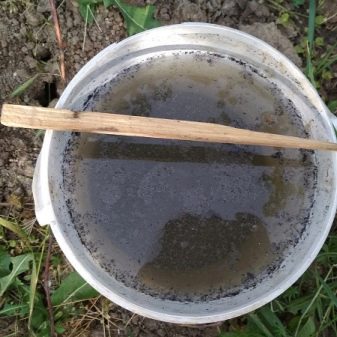

Care errors
Leaves often become too pale due to improper care... Leaf blades often become light green in color. due to improper watering regime. Roses love a lot of liquid. One adult bush should have at least one bucket of water. Do not forget to loosen the area around the plants after each such procedure, this will provide good aeration.... Sometimes the leaves turn pale due to the fact that the vegetation was planted in the wrong place. Remember that it is not recommended to plant a garden rose in areas near groundwater.
In addition, the rose may turn pale due to improper use of fertilizers. Most often, pale leaves indicate that vegetation is severely lacking in mineral components... After a short amount of time, the foliage will also begin to curl, dry out, the veins will acquire various uncharacteristic colors. Most often, a pale rose lacks nitrogen. But remember that too much of it will lead to the appearance of gray rot on the plant.
The leaves of a climbing rose often brighten. This usually happens due to lack of nutrition, as well as due to infection with chlorosis, powdery mildew or rust... In this case, a suspension of colloidal sulfur is used. You can also spray the damaged plant with a solution of soda ash and laundry soap. After that, mineral fertilizing is applied.
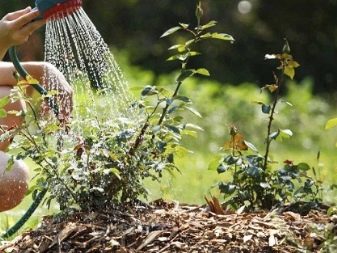
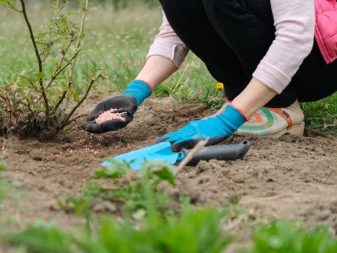
Other reasons
Often, the leaves turn light green due to exposure to harmful insects. Among them, it is worth highlighting spider mite. This parasite leaves special secretions on the foliage, because of which it begins to become covered with a pale bloom, and then dies off. To get rid of spider mites, you can use acaricides (for example, Fitoverm). They thoroughly wash all leaf blades on damaged bushes.
Green aphid can also cause the rose to fade. This parasite quickly sucks out all the juices from the young plant. Gradually, the foliage will begin to deform, curl and fall off. Aphids can also infect stems and flowers. To get rid of such a harmful insect, it is better to use a simple soap solution. In this case, the entire bush is treated at once. If there are a lot of pests on the bushes, then it is recommended to immediately apply insecticides.
Roses can hit and leafhopper... The parasite feeds on the succulent foliage of the plant. The leaves of the flower first turn pale, then turn yellow and fall off. It is very difficult to deal with such pests, therefore experienced gardeners are advised to take preventive measures in order to prevent their appearance.
As a prophylaxis, treatments with various insecticides are used.

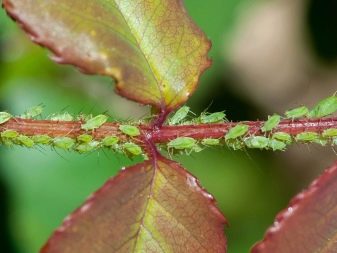

































































































The comment was sent successfully.